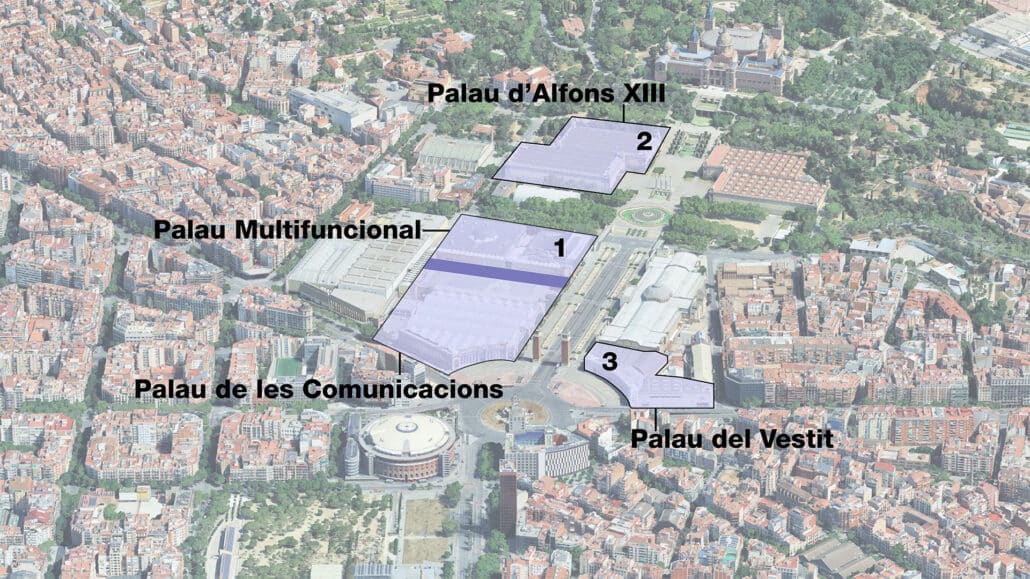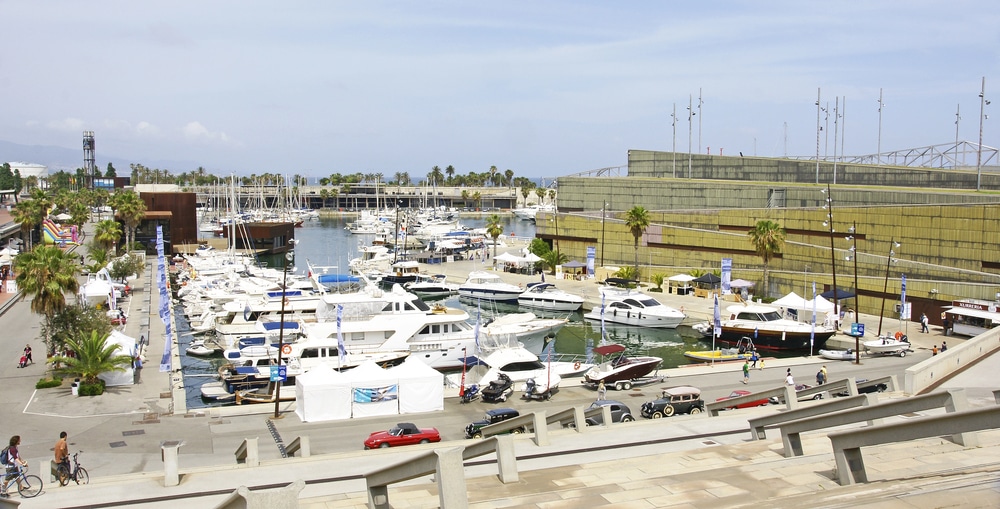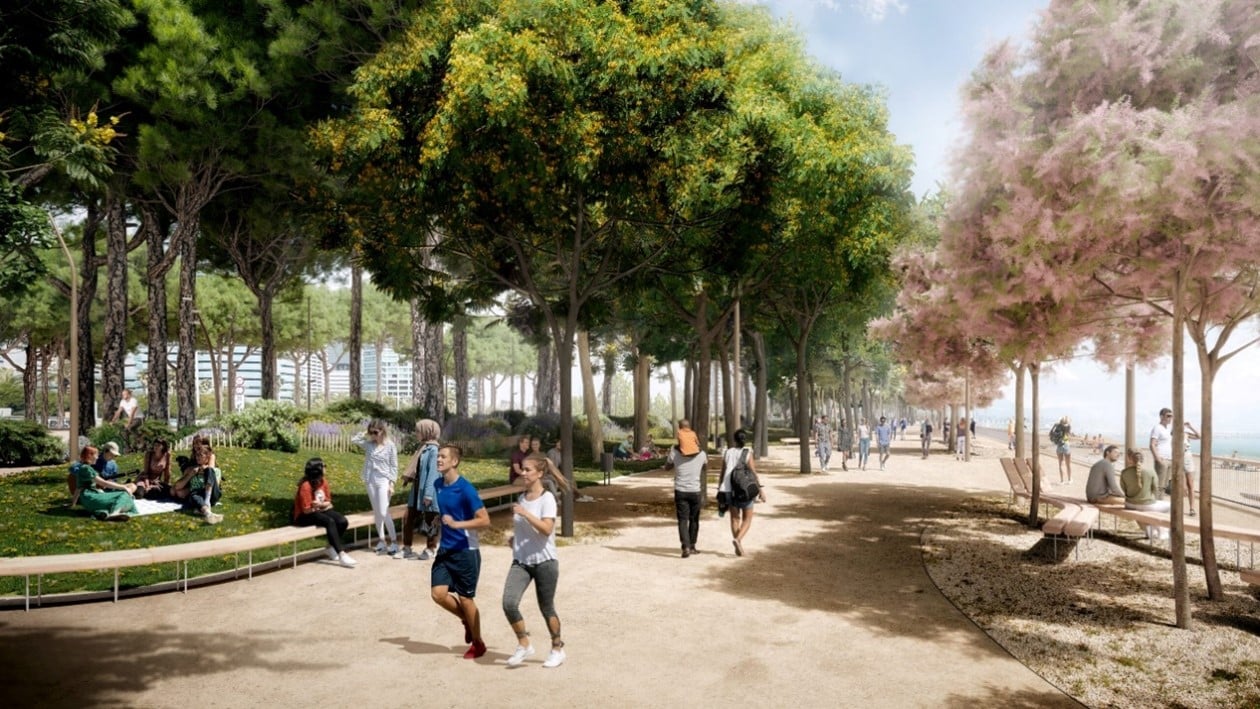The Montjuïc exhibition center, one of the most emblematic areas of Barcelona, is about to undergo a transformation that promises to turn it into a European trade fair benchmark. This remodeling has an ambitious goal: to update the facilities under three fundamental pillars: efficiency, digitalization and sustainability. All this with an eye to the future, but without forgetting the historical importance of this space for the city. It is expected that a large part of the works will be ready by 2029, the year in which the centenary of the 1929 International Exposition will be celebrated.

A project that redefines Montjuïc
Since May of this year, an architectural competition has been underway to select the firms that will lead this change. The competition has been divided into three key areas. In the first lot, the aim is to design a new Multifunctional Palace to be built on the site where Palaces 4 and the Congress Palace are currently located. In addition, this lot includes the renovation and expansion project of the Palau de les Comunicacions (Palau 1). Both must follow an aesthetic and functional coherence, as they will be located in nearby areas. Among the finalists in this first lot are Data Arquitectura i Enginyeria SLP, Harquitectes Area Productiva SLP and Nieto Sobejano Arquitectes SLP, among others.
Inauguration of Damm Sports City in Montjuïc
The second lot focuses on the design of the new Congress Palace, to be built in the current Palau Alfons XIII. This building, although renovated, must respect and integrate the catalogued historical elements of the existing structure, an important challenge for the finalist architects: Forgas_Arquitectes SLP, Cruz y Ortiz Arquitectos SLP, among others. The third and last lot aims to transform the former Palau del Vestit, today part of Palau 8. This space will become the Fira Innovation Hub, a center for the promotion of startups in economic sectors linked to the fairs organized at Fira de Barcelona. Among the firms competing in this area are Bjarke Ingels Group Architecture Spain SLP and Estudio Herreros SLP.
Innovation and respect for history
The challenge facing the architects is no small one. Updating the Montjuïc site to bring it up to modern standards without losing its historical essence requires great vision. The Palau Alfons XIII and other buildings that are part of the project have architectural elements that are fundamental to Barcelona’s historical memory. The ability to integrate the new and the old in the same space is what could make this project a model to follow in the renovation of fairgrounds in Europe.
Barcelona invests in the rehabilitation of Montjuïc Castle
In addition, digitalization will be key in the transformation of Montjuïc. The new spaces will not only be built with their present use in mind, but also with the future needs of the trade fair sector in mind. This approach seeks to make the facilities more flexible and multipurpose, adapting to events of all kinds, from traditional exhibitions to cutting-edge technology fairs.
How is the process progressing?
In this first phase of the competition, the 15 selected firms were chosen on the basis of their technical and economic solvency. Throughout the month of February 2025, they will have to submit their proposals anonymously. Each firm will receive financial compensation that will vary according to the lot in which they compete, with 35,000 euros for the finalists in the first lot, 30,000 euros for those in the second lot and 20,000 euros for those in the third lot.
Sala Montjuïc in summer with open-air cinema and music under the stars
Once all the proposals have been submitted, a jury composed of five internationally renowned architects will be in charge of evaluating them and choosing the winners. This jury is chaired by architect Josep Lluís Mateo and includes experts in landscaping, construction technology and technical architecture, among them María Langarita and Joan Olona. The names of the winners will be announced in the first quarter of 2025, a decisive step for the future of Montjuïc.
A space for innovation
One of the most interesting areas of the project is the creation of the Fira Innovation Hub. This space will be dedicated to the promotion of startups linked to emerging sectors and will be located in Palau 8. The Fira Innovation Hub has the potential to position Barcelona as a hub for innovation and technology. Being directly linked to the fairs organized at Fira de Barcelona, this space will offer startups an ideal environment to grow and connect with key players in their sectors.
The videoclip of Dua Lipa’s “Illusion” recorded at the Picornell swimming pools in Montjuic
This project, which will be located in a historic building, also poses an interesting architectural challenge, as it must integrate the original elements of the Palau del Vestit with a modern and functional design. The combination of the historical with the innovative is one of the aspects that have attracted the most attention in the selection process of the finalist studios.
Next steps and the Centennial legacy
The remodeling of Montjuïc does not end here. Once the winners of the current competition have been selected, a new call will be opened for the remodeling of the Palau de les Comunicacions (Palau 1) and the Palau de la Metal-lúrgia (Palau 8). These buildings are part of the second phase of the refurbishment and will play a key role in the creation of a more complete and functional exhibition center. In addition to the architectural projects, the Centennial Commission, made up of representatives of the Generalitat, Barcelona City Council and Fira de Barcelona, is working on the development of a program of events and activities to commemorate the centennial of the 1929 International Exposition. The aim is to create a lasting legacy for the city, with events, exhibitions and congresses that reflect the historical importance of Montjuïc and its role in the city’s future.
Montjuïc: a look into the future
Montjuïc is not only an iconic venue because of its history, but its transformation will position it as a benchmark in the European trade fair sector. The combination of innovation, sustainability and respect for heritage will make this venue not only more functional, but also more attractive to event organizers and visitors from all over the world. Looking ahead to 2029, the year in which Barcelona will celebrate the centenary of the 1929 International Exposition, the remodeling of Montjuïc promises to be one of the most ambitious projects of the coming years. Ultimately, this project will not only transform Montjuïc’s physical space, but also redefine its role in the global trade fair and congress landscape. The city of Barcelona continues to demonstrate that it is capable of innovating and adapting, while maintaining its rich history and cultural heritage.



